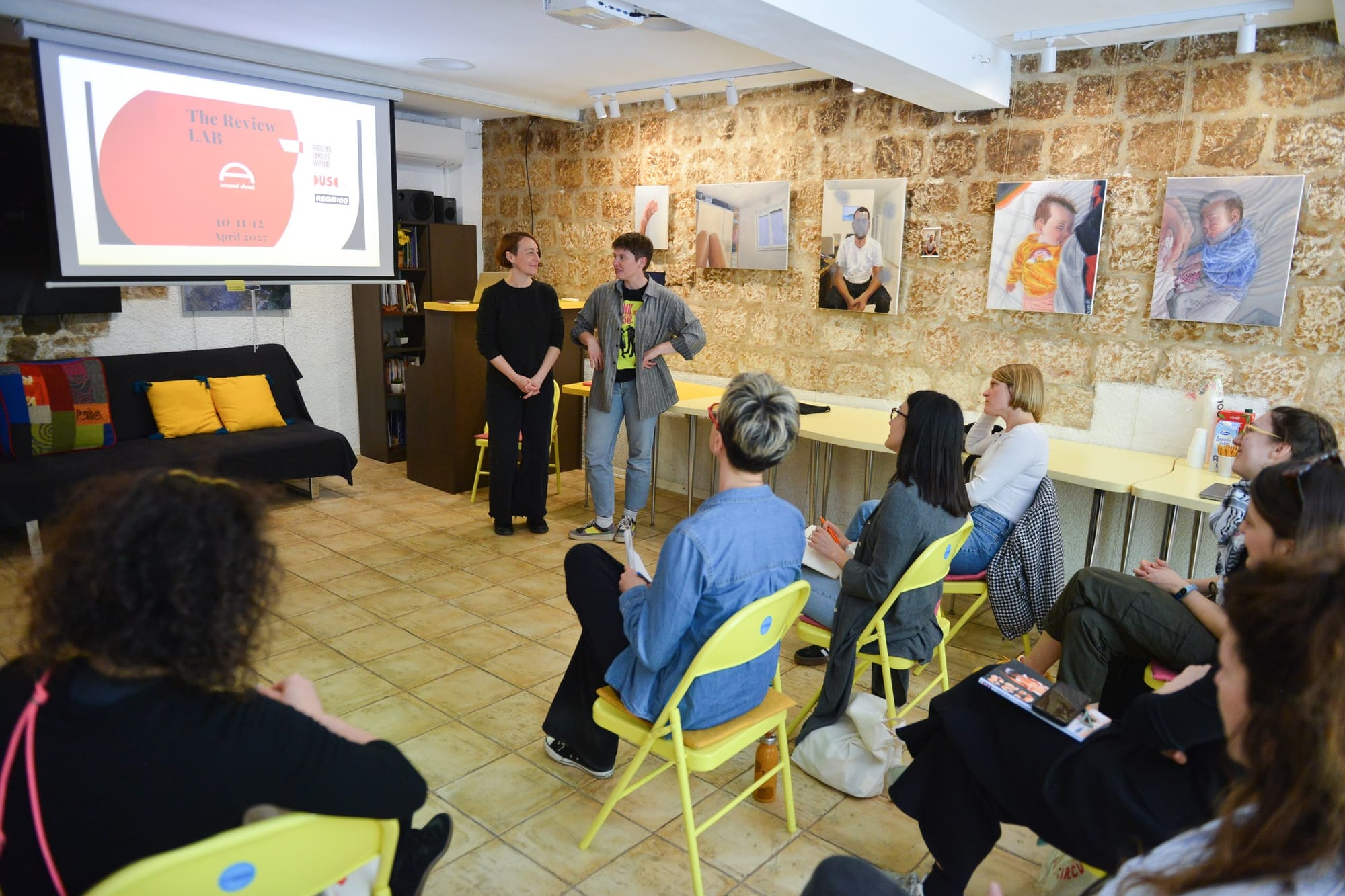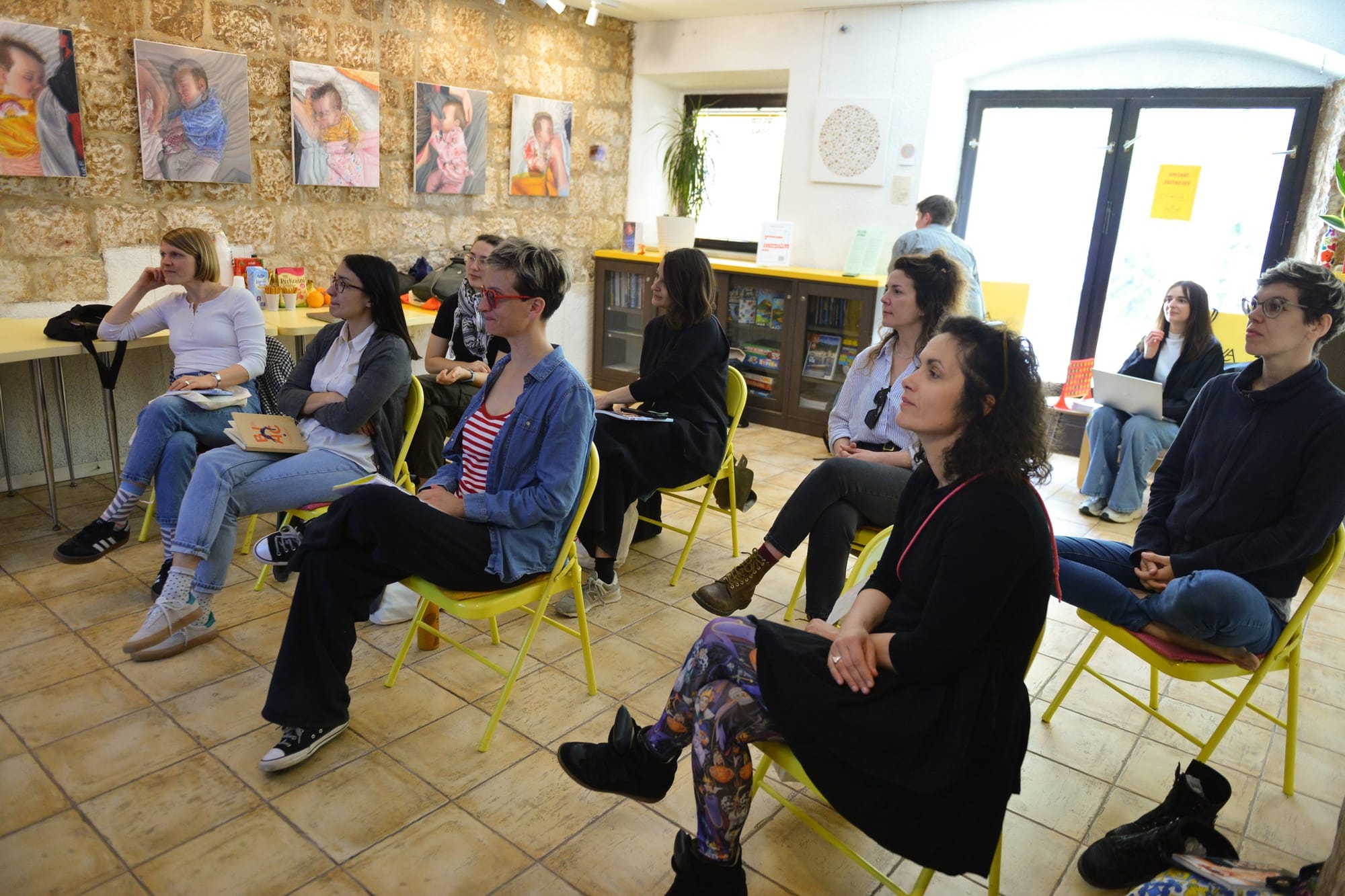Damocles without the Sword
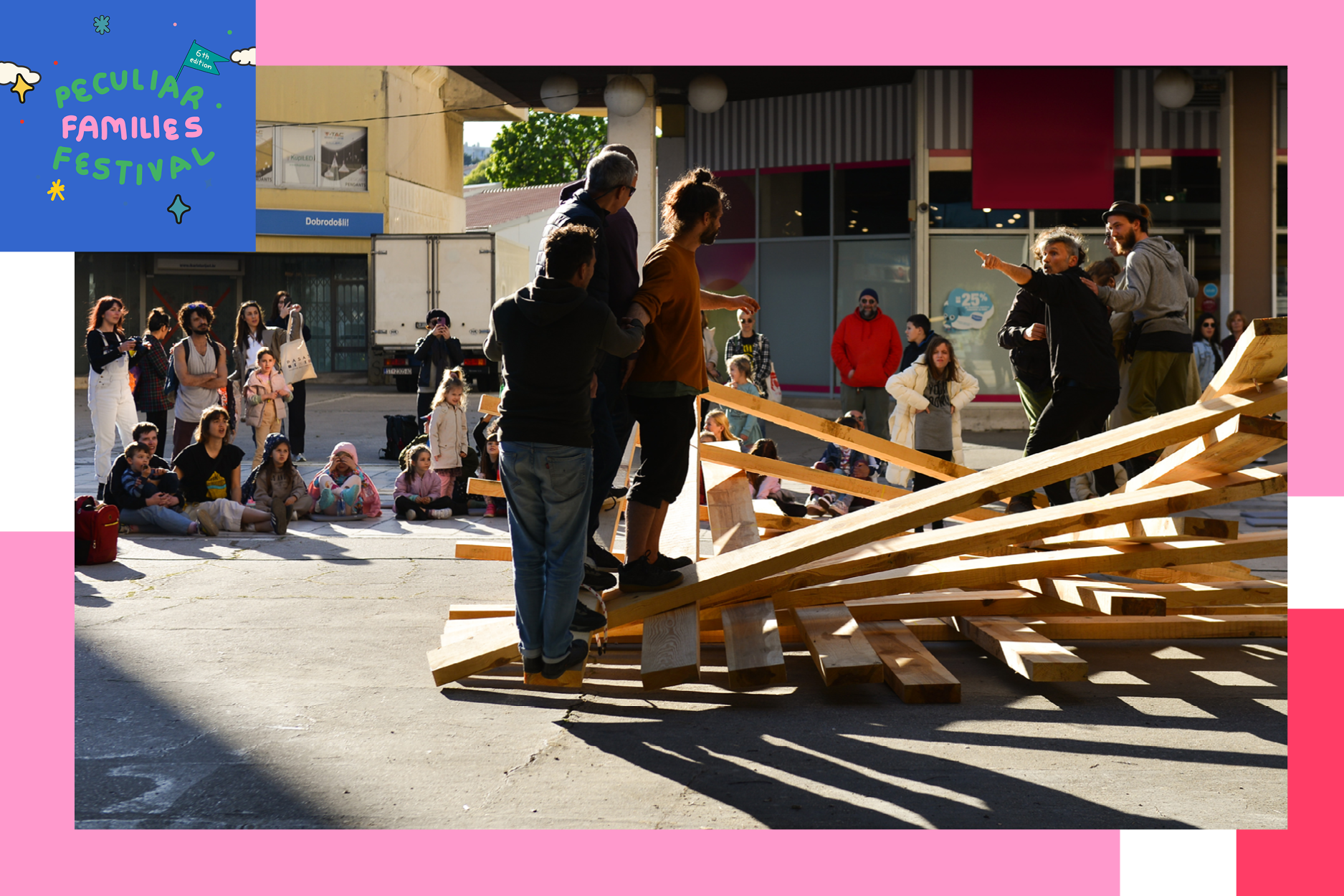
Most have heard of the famous Sword of Damocles—a symbol of the constant dangers that hang over power and privilege. The phrase has become a universal metaphor for any looming risks. But what happens when we take the sword out of the imaginary and leave only the tension?
That’s precisely what the French artistic collective Inextremiste explores in all their shows, as in the immersive performance Damocles, showcased at this year’s Peculiar Families Festival in Split, Croatia. Designed for adults and children over six years old, Damocles, a show “where potentially everyone can be heroes”, first stunned audiences in 2018 and has since graced international stages worldwide.


The performance’s dramaturgy is framed around volunteers from the audience collectively building a massive and shaky wooden structure made of exceptionally long planks. This joint effort is followed by actions from the group performing on this unstable construction.
The struggle to remain on the wooden framework often pushes the participants to explore their physical skills, resulting in spontaneous movements. Expanding the performance genre from risk-taking into risk-making, and merging circus with dance and street art, Damocles represents a unique hybrid. This ephemeral and form-on-the-spot collective is guided by a facilitator, the main artist in charge of leading the sequences of scenes from the Inextremiste troupe, who, throughout the show, we can recognise as the master of ceremonies.
The facilitator’s first action on the scene is to gain the spectators' trust, asking to hand his jacket to an unknown woman in the audience. In doing his first “trick”, he symbolically acknowledges the participatory nature of the performance while shifting responsibility for everything that would unfold onto the audience.

The balancing acts of audience volunteers atop the trembling wooden structure triggered a lot of laughter combined with genuine fear, a slight discomfort, and moments of collectively held breath. Having chosen not to step onto the stage, as an external observer, it has been evident that people navigated the construction in many different ways. The skill of those audience members with circus performance experience was noticeable, as was the less confident movement of those without it. Participatory performances like this, especially in unconventional genres such as circus arts, always leave open the question of how they would unfold with a traditional theatre audience.
The boundaries of the beginning and end of this immersive performance were rather porous, just like the spatial limits of the show. As a kind of intervention in public space, Damocles aspired to expand beyond the stage. The performance inhabited a vast, peripheral urban settlement near the student campus, in a concrete square surrounded by colossal apartment buildings.
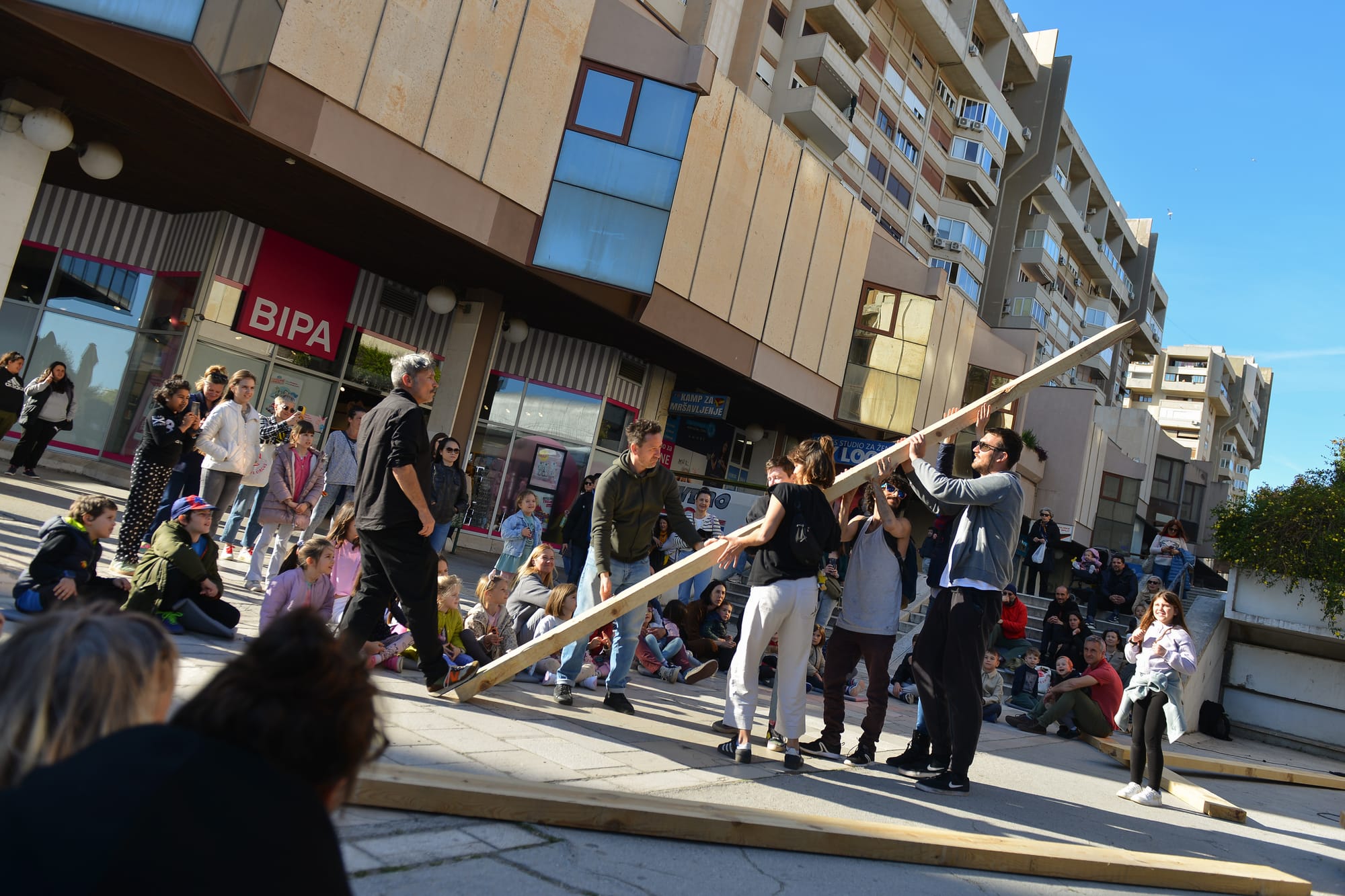
Settling performances usually adapted from mainstream venues into alternative spaces often holds the potential to contribute to cultural decentralisation. However, reaching out to new audiences is not so immediate. Those who attended the afternoon show, as already linked to the festival, witnessed that bringing art to people’s doorsteps does not necessarily mean they will embrace the offered aesthetic experience. Only a few passers-by stopped to immerse themselves in a segment of the performance. It seemed as though two parallel worlds coexisted in the same space: one belonging to Damocles and the other to the everyday life of the neighbourhood.
In Split, the performance’s shape was influenced by everything happening in its environment, the children’s running and shouting, the loud music from nearby cafes, and neighbours calling out to each other. All these elements formed a reality—a new spatial dimension of performance created in the moment.

Undoubtedly, the energy field of the space, including sound, light, and visual effects, imprinted the audience’s perception of the show. Would the energy exchange between performers and spectators have been deeper and more effective with fewer distractions? We can only speculate. However, one particularly intriguing comment came from a rare passer-by who decided to dedicate part of his afternoon to this unusual artistic performance. He exclaimed enthusiastically during the show: "I know what this performance is about! This is a reconstruction of Socialist Yugoslavia!"

Several people around him agreed with this observation, prompting me to ask why he thought so. He explained that the people balancing on the construction represented the diverse nations of former Yugoslavia, as the planks were as unstable as the once-great republic—yet, despite everything, they somehow managed to remain together.
While maybe considering its political undertones as an essential element of any theatrical work, I am quite sure the creators never anticipated this interpretation. The idea of Damocles as a metaphor for Yugoslavia is an illustrative example of the theoretical premise that every performance is unique and unrepeatable, with meanings not set in stone by its authors but instead shaped by the context in which it unfolds.
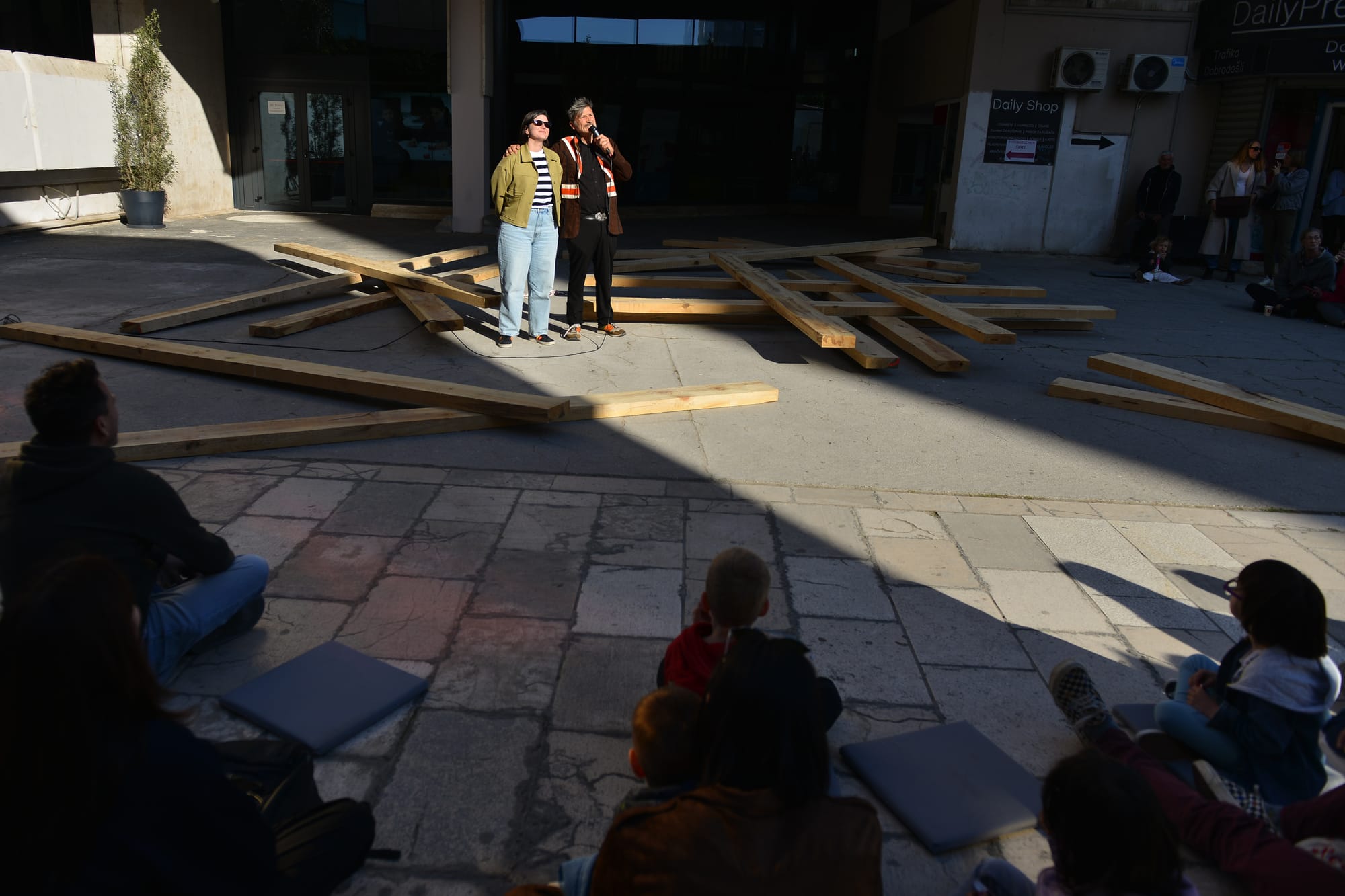
Damocles is designed to be participatory, but some parts of the performance in this context resulted in rigidity, especially in how gender roles were presented. When the master of ceremonies gave his jacket to a woman, he focused more on her appearance than on the actual transfer of responsibility. He insisted she stand where the sunlight would highlight her beauty, making it more about how she looked, rather than her role in the plot. This moment reflected traditional cultural ideas about gender, where women are often seen for their physical traits rather than their agency. In contrast to the open participation in movement and balance, gender roles remained fixed and unchallenged, leaving little room for interpretation or change.
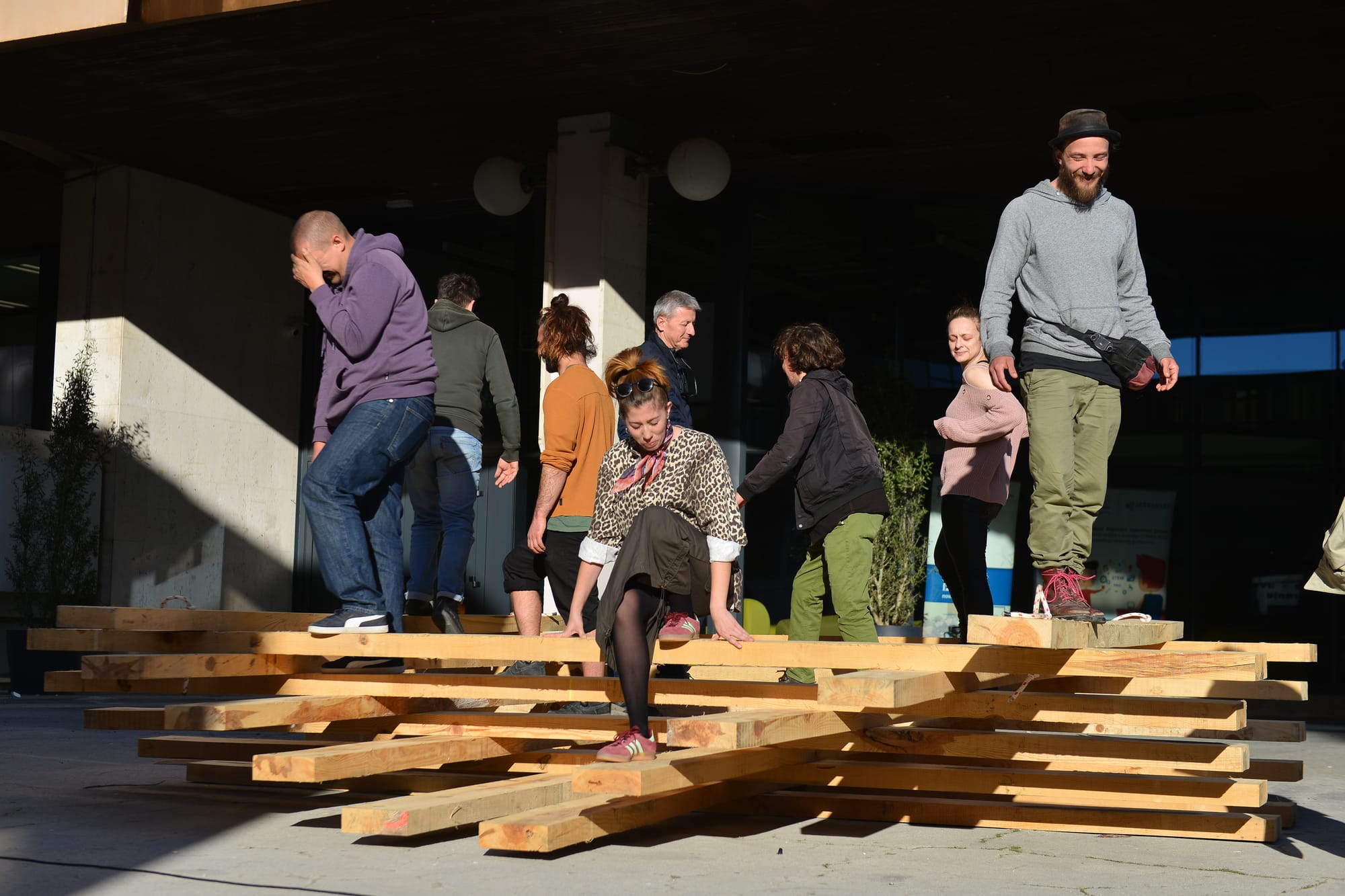
Damocles' underlying theme is community trust, especially in the actual global situation, when the present feels as uncertain and unstable as the wooden structure. Successful balancing by a group of people, despite shifting circumstances occasionally dictated by the artist, was achieved only through strong verbal and non-verbal communication, and willingness to help each other. Performing this show in times of great political instability, while the sword of neo-fascism hangs over humanity, suggests that there is only one true way forward—a path built on cooperation, tolerance, and empathy.
This review is published as one of the results of The Review Lab, a workshop held in Split by Around About Circus during the Peculiar Families Festival 2025 edition thanks to DUSC and Room100.
To know more about the festival, read the interview with the PFF artistic director Antonia Kusmanić.

